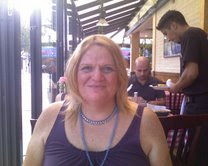I don't know whether it's possible to be an urban cyclist without having or developing some sort of interest in architecture. One of the wonderful things about New York and some other cities is that you can find a gem where you weren't expecting it.
This beauty is right across the street from the new Yankee Stadium:
I hadn't been in that part of town in a long time, so I don't know whether or how recently the building was renovated. I suspect that it was fixed up as the new stadium was built, but I also suspect that it hadn't deteriorated very much, as so much of the neighborhood around the old stadium (which was next to where the current stadium stands) had for so long.
If people couldn't tell that I hadn't spent much time in the neighborhood just by looking at me, they had to have known once I started taking photos. Then again, maybe some architecture lovers have trekked up that way.
Wouldn't you love to live in a building with this over the entrance?:
Or this by your window?
For a moment, I wondered whether someone might get upset with me for pointing my camera at his or her window. But building residents may be used to that sort of thing.
So, how did I end up there? Well, I just hopped on Tosca (my Mercian fixie) and pedalled across the Queensboro (a.k.a. 59th Street) Bridge. After descending the ramp on the Manhattan side, I found myself riding past Sloan Kettering, Rockefeller University and lots of dimpled blonde toddlers escorted by nannies or au pairs who were much darker than them. As I rode further uptown, the kids got darker and didn't have au pairs or nannies. None of it was new to me, but something would be after I passed the building in the photos.
In Manhattan, almost everything above Columbia University is commonly referred to as "Harlem," and in the Bronx, almost everything below Fordham Road is called the South Bronx. As it happened, I pedalled through the places that are, technically, Harlem and the South Bronx. But I also passed through a number of other neighborhoods that consist almost entirely of people of color, most of whom are poor and whose neighborhoods are lumped in with Harlem and the South Bronx.
I ride in those places because there are some interesting sights and good cycling. But today I noticed something in those neighborhoods that, I now realize, makes them not only different neighborhoods, but different worlds, from Astoria, where I now live, and Park Slope, where I lived before moving here--not to mention neighborhoods like the Upper East Side and Yorkville, which I also rode through today.
In neighborhoods like Harlem and the ones I saw in the Bronx, one generally doesn't see as many adults, especially young ones, cycling. And, as one might expect, the bikes one sees are likely to have been cobbled together. I'm not talking about the kinds of bikes one can buy used from any number of bike shops or the ones available from Recycle-a-Cycle and other places like it. Rather, I'm talking about bikes that look like they were spliced together from bits and pieces that were tossed out or found lying abandoned somewhere or another.
As often as not, the bikes and parts don't go together. I'm not talking only about aesthetics: Sometimes parts that aren't made to fit each other are jammed together and held together by little more than the rider's lack of knowledge about the issue.
It was usually poor men of a certain age who were riding the kinds of bikes I've described. Younger men might ride them, too, but they are more likely to be found on cheap mountain bikes, some of which came from department stores. A few are the lower-end or, more rarely, mid-range models of brands that are sold in bicycle shops. Those bikes were probably acquired in one degree or another of having been used; none of them looked as if they were purchased new.
But the most striking thing I noticed is this: I did not see a single female of any age on a bike in those neighborhoods. It make me think back to other times I've been in those parts of town and I realized --if my memory was serving me well--that I never saw a woman, or even a girl, on a bike.
I started to have those realizations after I stopped at an intersection a few blocks north of the stadium. A very thin black man was crossing the street. He approached me and, in a tone of consternation, said, "You're riding a bike?" For a split-second--until I realized why he was asking the question--I thought it was strange and ignored him. But he persisted: "You ride a lot?"
I nodded.
"Be safe. I don't want a nice lady like you to get hurt."
"I will. Thank you. Have a nice day."
I realized that I may well have been the first woman he, or many other people in that neighborhood, had seen on a bike.
How would his life be different if he saw more women on bikes? And, even more to the point, how might the lives of some of those women be different if they rode bikes? And, finally, I wondered, how might those neighborhoods be different?












